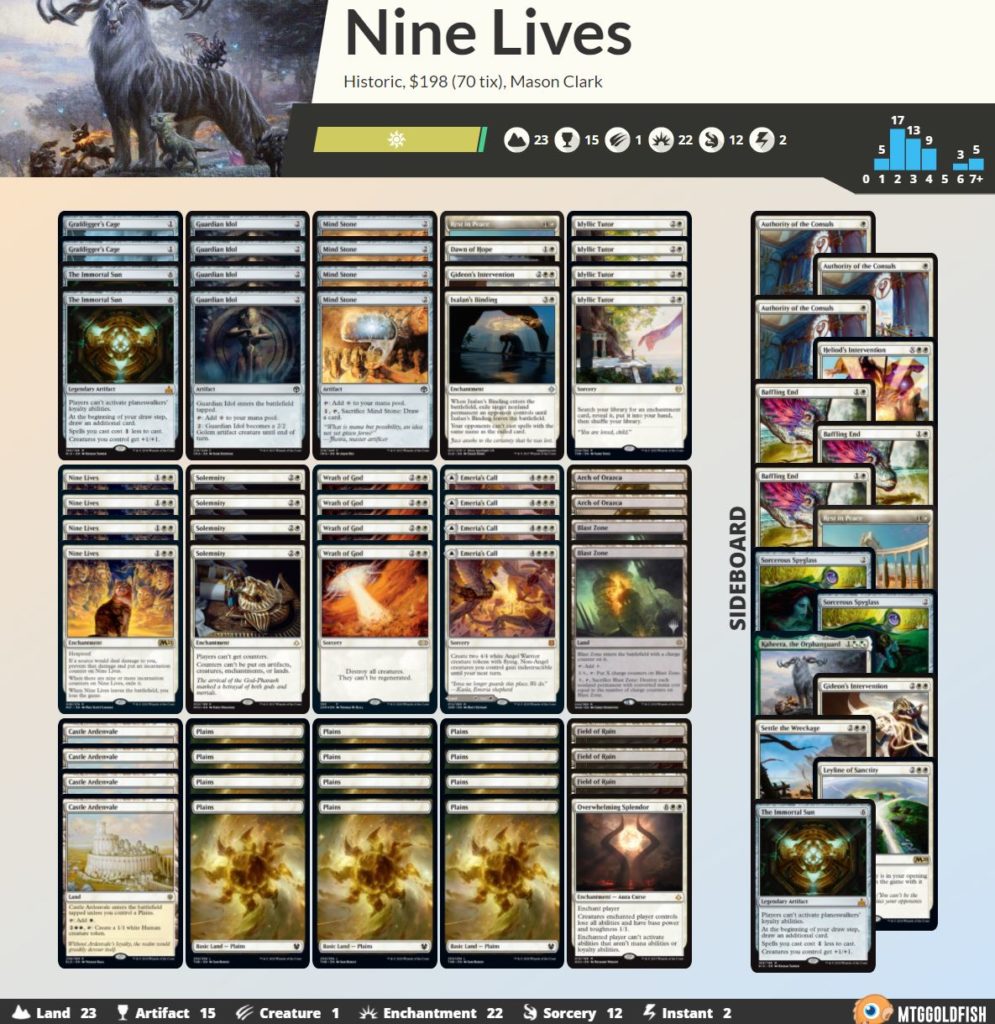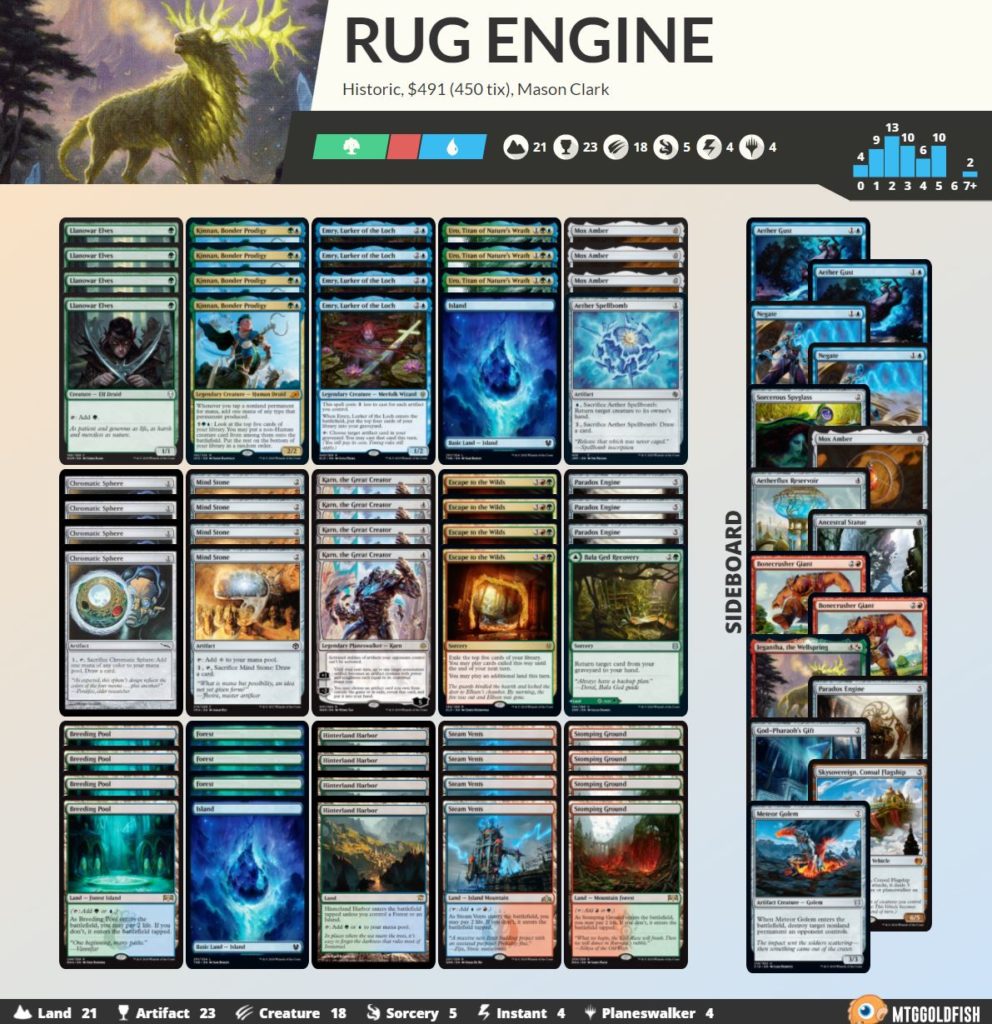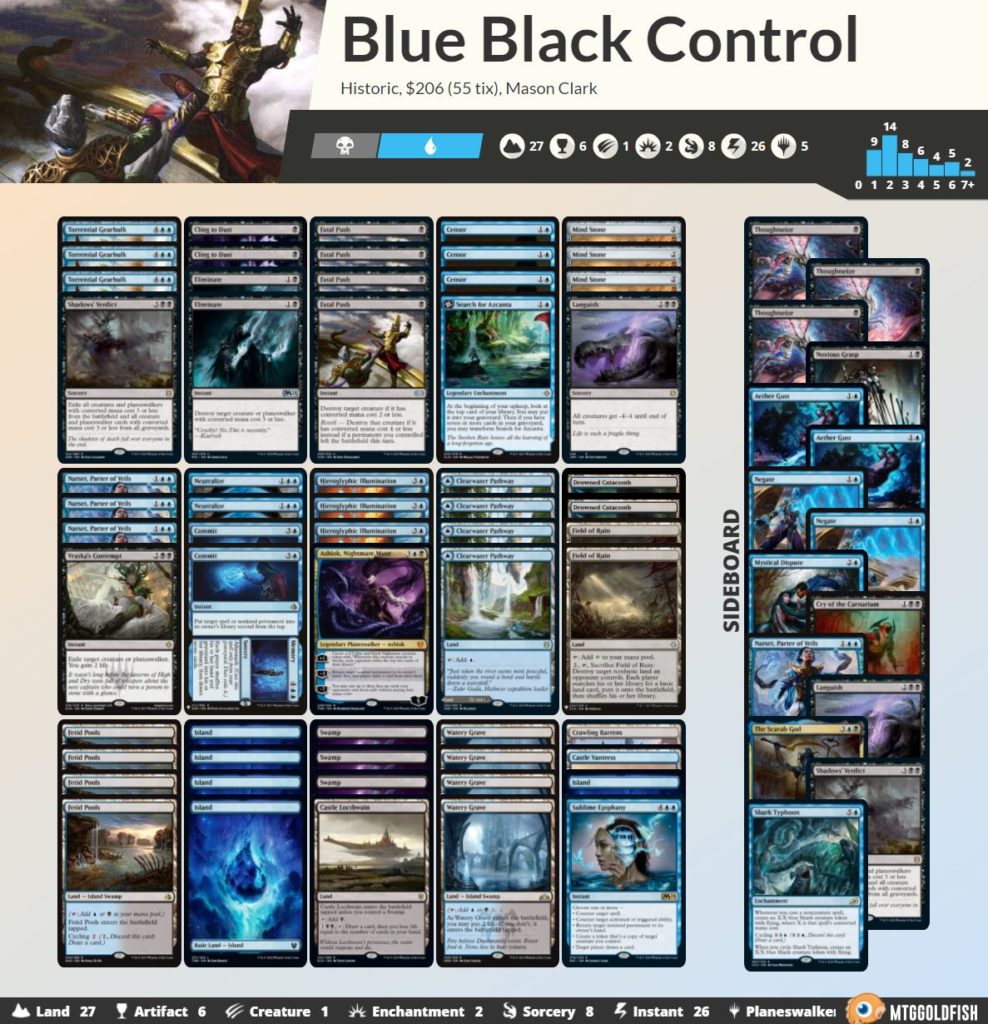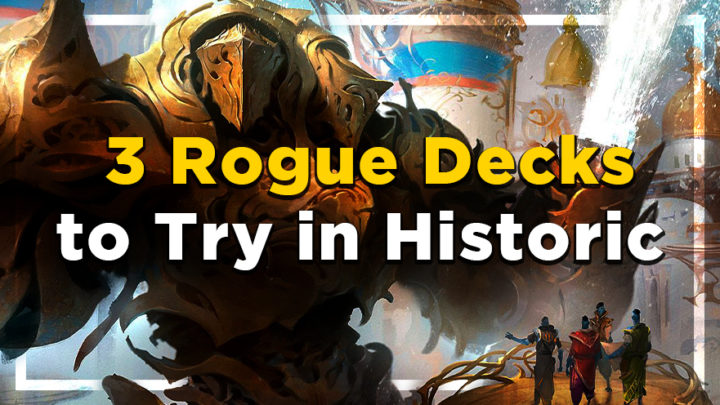Last week, we covered some of the top players in Historic in anticipation of the Arena Open, and this week, we have another round of Arena qualifiers. Uro piles have established themselves as the decks to beat, so if you’re looking for the most competitive deck to play, I suggest trying it. But today, I wanted to focus on some of the more fringe decks of the format. Historic has a deep card pool, and there’s a lot more to the metagame than these top decks. If you’re like me and you’d rather not play another Sultai mirror, here are some cool decks you can try in Historic this weekend.
Nine Lives

Buy this deck from Card Kingdom
Export this deck to Arena via MTGGoldfish
Nine Lives is a prison deck popularized by MPL member Grzegorz Kowalki, and it’s really the cats’ meow. The goal of the deck is to get Solemnity and Nine Lives in play at the same time, at which point you can no longer lose to combat damage. From there, you just try to make sure your combo doesn’t get broken up and win in some trivial way.
This is the truest “prison” deck that we’ve seen so far on Arena; the Solemnity/Nine Lives combo locks most players out of the game completely. Your deck also plays cards like Wrath of God to prevent you from being run over by aggressive decks and The Immortal Sun to keep the midrange decks from out-grinding you.
If you’re interested in picking this deck up, you’ll need to focus on how best to leverage your resources and life total. I have seen a lot of players try to slam Nine Lives as quickly as possible, but your life total is a resource more so in this deck than in any other. Make sure you use your life total as much as possible before deploying Nine Lives — this will maximize the number of turns you have to assemble the combo. Learning how best to leverage your resources will go a long way in having success with this deck.
Temur Paradox Engine

Buy this deck from Card Kingdom
Export this deck to Arena via MTGGoldfish
This deck is brand-new to Historic, so you can get in on the ground floor if you pick it up this week. Temur Paradox Engine blends the combo aspect of the past Paradox Engine decks with a grindy midrange plan that leans on Uro.
This deck has various different builds that all have their merits, and Simic and Sultai Engine are both fine options. Simic goes more all-in on the combo, while Sultai has a bit more interaction and plays more of a fair game plan. But the Temur build stands out from the rest for its ability to utilize Escape from the Wilds. Escape gives you a use for all the mana this deck is able to produce, and it also helps you find your combo pieces.
Comboing off in this deck involves generating infinite mana and drawing your whole deck, then using Karn, the Great Creator to grab a win condition. All you’ll need to get started is one mana rock, Emry, Paradox Engine, and a Chromatic Sphere. Here’s how the sequence works:
- Tap the mana rock for a mana
- Use Emry to cast Chromatic Sphere
- Paradox Engine untaps everything
- Make a mana and draw a card off Sphere
- Repeat till you find Karn, the Great Creator
- Use Karn to grab Aetherflux Reservoir
- Loop Sphere till you can win with Reservoir
The deck also has cards like Kinnan, Bonder Prodigy that allow you to create extra mana from non-land sources. This means this deck can go off as early as turn four if it’s uninterrupted. This sort of dynamic game plan makes Temur Paradox Engine a very powerful and impactful deck. In fact, I could see it becoming one of the biggest players in the format.
Blue-Black Control

Buy this deck from Card Kingdom
Export this deck to Arena via MTGGoldfish
Blue-Black Control has mostly flown under the radar in Historic, but it’s an option Control players should consider. Much like Zendikar Rising Championship winner Blue-White Control, Blue-Black is trying to prey on a few target decks in the format, but has a more proactive approach to winning the game.
One of the biggest reasons to play Blue-Black Control is Torrential Gearhulk. When Kaladesh Remastered was first previewed, many players meme’d on the old Gearhulk. “Mystical Dispute crushes this card!” “Can you imagine trying to cast a SIX-mana card into Mystical Dispute?” While this is a true statement in a vacuum, Mystical Dispute has been noticeably absent from Historic sideboards lately. Most decks have maybe one Mystical Dispute in the board, and all the Sultai decks are playing zero, since they’re bad in the mirror. Gearhulk is therefore a viable option that allows Blue-Black Control to close the door on a game quickly and to target different decks in the metagame.
Blue-Black’s first big target is Sultai. While Uro can be a small problem, the rest of this deck lines up very well against theirs. You’re flush with answers for their few key threats, and you get to play multiple main-deck Narsets — a card the Sultai decks play a lot in the sideboard to win the mirror.
Your next big target is Goblins. You’re typically able to keep Muxus from hitting the battlefield, but you’ll need to make sure they don’t nickel and dime you with the scraps they have left over. This is one of the match-ups where Gearhulks truly shine; you should be able to ensure that your Gearhulks are always two-for-ones at worst.
One more important part of this Blue-Black deck is a really neat built-in synergy. If you get Narset, Parter of Veils on the board and cast the Memory half of Commit//Memory, your opponents will only get to draw one card. This combo may not affect the board tremendously, but given how easy it is for this deck to keep the board clear, this swing in cards is usually just game over.
Historic is full of underexplored decks. We briefly covered a few of them today, but there are a lot more yet to be discovered. And while the decks we shared today might not be the most popular choices, you can still succeed with them.
What are you battling with in Historic this week? Tweet at @masoneclark and @card_kingdom and let us know!

Mason Clark is a grinder in every corner of the game who has played at the pro level and on the SCG Tour with Team Nova. Whether he’s competing in Standard, Historic or Modern, Mason plays with one goal in mind: to be a better player than he was the day before. Check out his podcast, Constructed Criticism, and catch his streams on Twitch.

